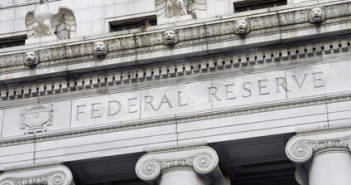The long-awaited Non-Farm Payrolls for September disappointed with a gain of only 148K jobs. While the report isn’t a total disaster (drop in the unemployment rate without a drop in the participation rate), it doesn’t paint a picture of a sustainable recovery, which seems quite elusive.
And, if we see a mediocre picture of the US economy before the big political crisis, how will it look afterwards? Data will be distorted. That’s quite certain. And it probably won’t be good either. Here is why QE tapering, that seemed so close in September, could come only in April.
The US government was shut down for 16 days. During these days, the economy was hurt. But that was just the beginning. The loss of confidence among consumers and investors alike has a greater impact.
The biggest impact comes from the resolution to the crisis: a new government shutdown deadline on January 15th, as well as a debt ceiling deadline on February 7th. With accounting acrobatics, this deadline could be postponed to March.
This alone should be enough to push any policy change to after March 2014. Looking at the list of projected Fed meetings, all other options seem unlikely as well:
- October 30th 2013: Zero chance. Data is weak and distorted, and there’s no press conference.
- December 18th: The “Dectaper” seems unlikely due to lack of credible data. Job data may stabilize only around December.
- January 29th: There is no press conference and it comes only two weeks after the government shutdown deadline. Most importantly: it is Bernanke’s last decision: he retires on January 31st and it’s hard to believe he will announce a change on his way out.
- March 19th: Janet Yellen’s first decision, and a press conference is scheduled. Assuming a swift resolution to all the issues, Yellen’s dovishness is likely to push her to remain on the cautious side and wait for more evidence for a recovery.
April 30th – Tapril?
No press conference is scheduled, but Yellen might like it: she is not know for being talkative or having extraordinary communication skills. Her strength is her economic analysis and her correct forecasts. However, her communication skills are considered work in progress.
In addition, the US economy tends to show positive signs at the beginning of the year. While some of the data is later revised to the downside, a combination of no political hurdles, a seemingly stronger economy and fear of creating new bubbles could all build up to the reduction of QE from the current level of $85 billion per month.
And what if the economy doesn’t improve and even falls into a recession? In this scenario, we cannot rule out the opposite policy: an increase in bond buying rather than a reduction: $100 billion per month and higher.
The next FOMC releases during 2014 are on June 18th, July 30th, September 17th, October 29th and December 17th.
What do you think? Will we have a Tapril?
Further reading: Debt deal deals blow to QE tapering – USD in a world of pain
